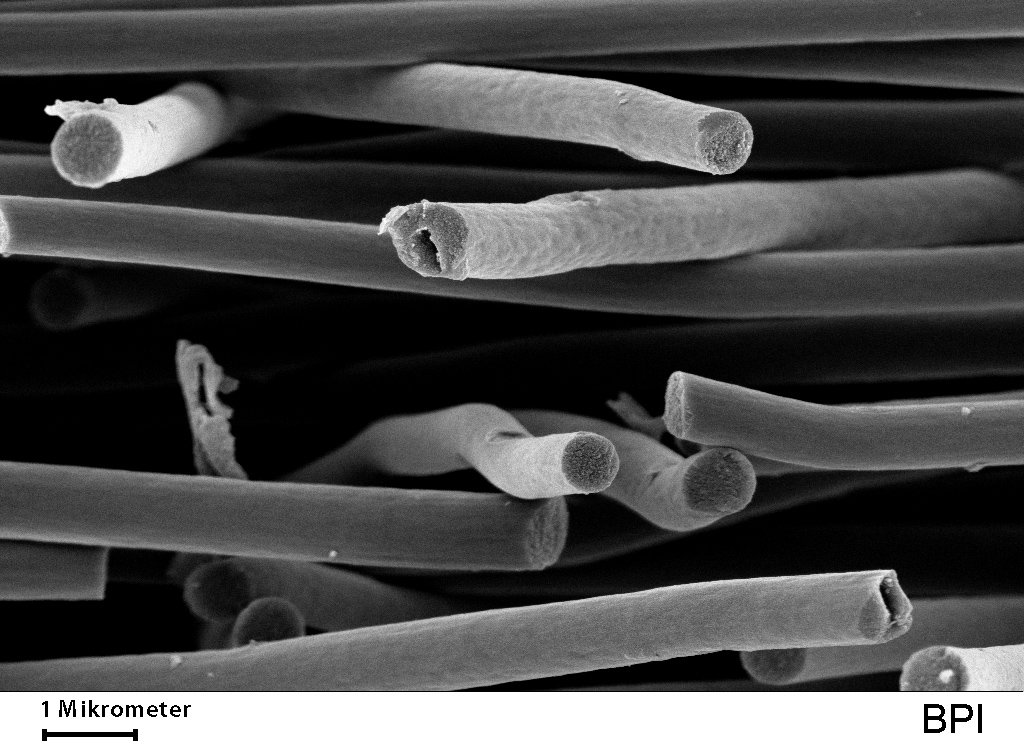| Apr 04, 2023 |
Novel electrospun nonwovens fuse exceptional electrical conductivity and remarkably low thermal conductivity
(Nanowerk News) A groundbreaking study by researchers at the University of Bayreuth, published in Science Advances ("Extremely low thermal conductivity and high electrical conductivity of sustainable carbonceramic electrospun nonwoven materials"), introduces innovative electrospun nonwovens with the rare fusion of exceptional electrical conductivity and remarkably low thermal conductivity.
|
|
These nonwovens, derived from a straightforward material concept, signify a significant advancement in materials research by uncoupling electrical and thermal conductivity. Composed of carbon and silicon-based ceramic through the electrospinning process, these nonwovens offer immense technological potential for applications in energy technology and electronics.
|
|
Moreover, their cost-effective, large-scale production and processing make them suitable for industrial use.
|
 |
| Scanning electron image of fibers in a novel electrospun nonwoven which exhibits an unusual combination of high electrical conductivity and extremely low thermal conductivity. (Image: University of Bayreuth)
|
|
Conventionally, high electrical conductivity corresponds to high thermal conductivity, and low thermal conductivity aligns with low electrical conductivity. The growing interest in multifunctional materials in various high-tech industries has prompted the need for materials combining efficient electrical conduction and low thermal transport.
|
|
Despite the development of dense inorganic materials, conjugated polymers, and alloys, achieving a blend of extremely low thermal conductivity and high electrical conductivity remains a challenge for flexible, foldable materials.
|
|
The University of Bayreuth's research team has devised an ingenious concept to overcome this hurdle: the new electrospun nonwovens consist of carbon and silicon-based ceramic fibers, featuring a sea-island type nanostructure and measuring between 500 and 600 nanometers in diameter.
|
|
Each fiber contains a carbon matrix with homogeneously distributed nano-sized ceramic phases. These particles form minuscule "islands" within the "sea" of the carbon matrix, exerting opposite yet complementary effects. The carbon matrix facilitates electron transport in the fibers, providing high electrical conductivity, while the nano-sized silicon-based ceramic prevents thermal energy from dispersing easily.
|
|
This results from the high interface between the nano-sized ceramic and the carbon matrix and the nonwoven's minute pores, causing strong phonon scattering—the smallest physical units of vibration induced by thermal energy. Consequently, a continuous, directed heat flow does not occur.
|
|
A comparison with over 3,900 different types of materials, including ceramics, carbons, natural materials, synthetic polymers, metals, glasses, and various composites, accentuates the novel nonwovens' unparalleled combination of high electrical and extremely low thermal conductivity. The electrospun composite fiber material demonstrates more distinct coupling between electron transport and thermal energy insulation than its counterparts.
|
|
Dr. Xiaojian Liao, the study's first author and postdoctoral researcher in macromolecular chemistry at the University of Bayreuth, explains that the electrospun nonwovens possess highly attractive multifunctional properties typically found in distinct material classes: exceptional electrical conductivity, thermal insulation akin to polymer foams, and the non-flammability and heat resistance of ceramics. He adds that these fibers, created from commercial polymers, are based on a simple material concept.
|
|
Prof. Dr. Seema Agarwal, professor of macromolecular chemistry at the University of Bayreuth and one of the study's corresponding authors, envisions various application areas for the new fibers, such as energy management, battery-powered electromobility, smart textiles, and aerospace. The interdisciplinary team at the University of Bayreuth, with expertise in ceramics, polymers, electrospinning, physical chemistry, and electron microscopy, contributed to the study's success.
|

